The Canadian government has committed to achieving 100% zero-emission vehicle (ZEV) sales by 2035 for all new light and heavy-duty vehicles. This goal is a part of Canada’s 2030 Emissions Reduction Plan, which aims to have an emissions target of 40% below 2005 levels by 2030. The 2035 ZEV sales target is a significant goal; however, there have been several questions regarding its feasibility. There has also been confusion about what will happen to gas-powered vehicles. To help answer these questions, our blog will take an in-depth look at the federal 2035 ZEV sales target, how this goal can be achieved and the challenges to meeting the target.
Terminology used
Before we begin, here are some terms and abbreviations used throughout the article:
Zero-Emission vehicles (ZEV): Any vehicle that has the potential to produce no tailpipe emissions. ZEVs can have an internal combustion engine, but must also be able to operate without it. Battery electric, plug-in hybrid electric, and hydrogen fuel cell vehicles are considered ZEVs. This term is sometimes used interchangeably with EV (electric vehicle).
Battery electric vehicles (BEV): Vehicles powered solely by an electric motor and battery pack. They are sometimes referred to as fully electric vehicles.
Plug-in hybrid vehicles (PHEV): Vehicles with an internal combustion engine and an electric motor/battery pack. PHEVs typically run on electric power until the battery is drained. The internal combustion engine then takes ver. PHEVs produce no tailpipe emissions when running on electric power.
Fuel cell electric vehicles (FCEV): Vehicles powered solely by an electric motor using electricity generated by hydrogen gas stored in the vehicle’s onboard tank.
Internal combustion engine vehicles (ICE): Vehicles powered by gasoline.
Overview
As previously mentioned, the federal government intends that all new light and heavy-duty vehicle sales be zero-emission vehicles by 2035. The Electric Vehicle Availability Standard outlines interim sales targets that auto manufacturers and importers must meet. The targets start for the 2026 model year and increase annually until 2035. The following are the annual ZEV-regulated sales targets:

Source: Government of Canada
To help manufacturers transition their fleets to meet the ZEV targets, the Standard includes a credit system. Essentially, companies that exceed their ZEV targets generate credits which they can bank for up to five model years or trade. Accumulated credits can be used to offset costs. Companies that do not meet the ZEV sales targets generate a deficit, which must be resolved within three model years. Credit amounts vary by vehicle type and vehicle range. BEVs, FCEVs, and PHEVs with an all-electric range of 80 km or more generate one credit in all years leading up to 2035 and beyond.

Source: Government of Canada
Credits are also available for installing charging infrastructure with a priority placed on DC fast charging stations. Companies can earn one credit for each $20,000 invested in new fast-charging infrastructure projects which meet the following conditions:
- Projects must install new DC fast charging stations.
- Stations must have a rated power of at least 150kW.
- Stations must be operable for at least five years after installation.
- All stations must be available to any ZEV with a compatible charging port or adapter.
- All stations must be opened between January 1, 2024, and December 31, 2027.
It is important to note that the sales target applies only to new vehicles. This means older ICE vehicles will not be affected. In other words, drivers will still be able to purchase used ICE vehicles and older gas-powered cars will not suddenly be removed from the road.
The benefit of the interim sales targets is it ensures the supply of ZEVs in Canada keeps up with consumer demand. This gradual ramp-up period also allows provincial governments to prepare gird infrastructure for the increased load.
Where is Canada now?
The number of ZEVs registered in Canada has steadily increased in recent years. In 2023, ZEV registrations totalled 10.8% of all new vehicle registrations, up from 8.2% in 2022. This was the first year in which ZEV registration reached double-digit market penetration. To further highlight ZEV growth, total registration in 2020 was only 3.52%. However, these sales figures do not truly reflect the strength of the ZEV industry in Canada. While the ZEV market growth has been significant, its pace has slowed. According to an AutoTrader survey, EV purchase intention in 2023 was 56%, down from 68% in 2022. As a result, ZEV adoption has not grown at the rate preferred by the federal government. Furthermore, Canada’s ZEV market still falls behind those of China, Europe and the U.S., which collectively account for approximately 95% of global EV sales.
Challenges
As noted in the previous section, ZEV in Canada in recent years has been notable, but it is at a slower pace than in other countries. There are several reasons behind this.
First, the high price tag of some ZEVs, battery-electric models in particular, is a dealbreaker for many drivers.
Second, Canada currently does not have sufficient public charging infrastructure to support ZEV growth. This issue is most evident in rural areas. The lack of public charging stations feeds into range anxiety, the fear of driving an electric vehicle running out of power and being unable to find a charging station. According to Natural Resources Canada, Canada will need approximately 442,000 and 469,000 public charging ports by 2035 in order to reach the federal sales target. As of December 1, 2023, there are 10,245 charging stations and 25,246 charging ports in Canada.
Third, there are growing concerns about whether Canada’s electrical grid will support the influx of ZEVs. A 2020 report commissioned by Natural Resources Canada concluded that EVs will increase nationwide electricity by 22.6% by 2035. The report states the forecasted ZEV load is equivalent to adding Ontario’s 2019 electrical load to Canada’s grid. Furthermore, a 2022 report by the Canadian Climate Institute states that Canada’s electricity generation needs to grow 2.2-3.4 times bigger than today in order to meet EV electrical demand. Upgrading the grid will take time and require a substantial amount of money. Critics argue that the upgrade will drive up residential electricity rates and impact reliability.
The fourth and arguably the most significant barrier to ZEV adoption in Canada is the variety of misconceptions about them. Some examples include:
- ZEVs cannot handle long driving distances.
- ZEVs are unreliable and break down frequently.
- Electric vehicles are more expensive than gas-powered vehicles.
- ZEVs are actually worse for the environment due to manufacturing emissions.
One or more of those points have been used as reasons for not purchasing an EV.
How can Canada increase ZEV adoption?
As we noted above, one of the biggest hurdles to ZEV adoption in Canada is a lack of knowledge about these vehicles. Therefore, increasing education on zero-emission vehicles could boost sales. The Government of Canada has the Zero Emission Vehicle Awareness Initiative (ZEVAI) that supports projects aimed at increasing awareness, knowledge, and public confidence in ZEVs and public charging infrastructure. Example projects include:
- Web-based resources.
- Outreach and awareness campaigns.
- In-person awareness events like test driving opportunities.
To solve the issue of cost, the Government of Canada offers the Incentives for Zero-Emission Vehicles (iZEV) program. Drivers can receive up to $5,000 for the purchase of a battery electric, hydrogen fuel cell, and longer-range (equal to or greater than 50 km) plug-in hybrid vehicle. Shorter range PHEVs are eligible for up to $2,500. Incentives for ZEVs are also available at the provincial level. In some cases, provincial incentives can be combined with the federal rebate program. For example, the CleanBC Go Electric rebate program is stackable with the iZEV program.
Investing in convenient, accessible, and fast public charging infrastructure is a key part of increasing ZEV adoption. According to the Canadian Vehicle Manufacturers’ Association (CVMA), Canada will need approximately 4 million public charging ports to support the 2035 sales goal. While the federal government does not have ZEV charging incentives, it does have the Zero Emission Vehicle Infrastructure Program (ZEVIP). Launched in 2019, the ZEVIP provides funding for the installation of public EV chargers. In the latest round of funding, priority is given to projects looking to install chargers in underserved areas. Multiple provinces also have their own public charging rebate programs.
The CVMA recommends the following actions be taken to expand Canada’s charging infrastructure:
- The federal government determines the exact charging infrastructure required to support Canada’s ZEV sales goals.
- The federal government tasks key stakeholders to assess the barriers and develop solutions and actions to establish ZEV charging in multi-unit residential buildings.
- The federal government coordinates with utilities to ensure there is an appropriate level of clean, affordable, and reliable electricity generation to support growing charging infrastructure.
- The federal government establishing a ZEV charging infrastructure advisory body composed of automakers, charging companies, provinces, municipalities and utilities to provide guidance on charging needs, technology developments, and the connection to Canada’s ZEV sales targets.
An advantage of the 2035 sales target is it gives utilities across Canada time to plan and implement grid upgrades. The interim targets also make the growth in demand somewhat predictable.











